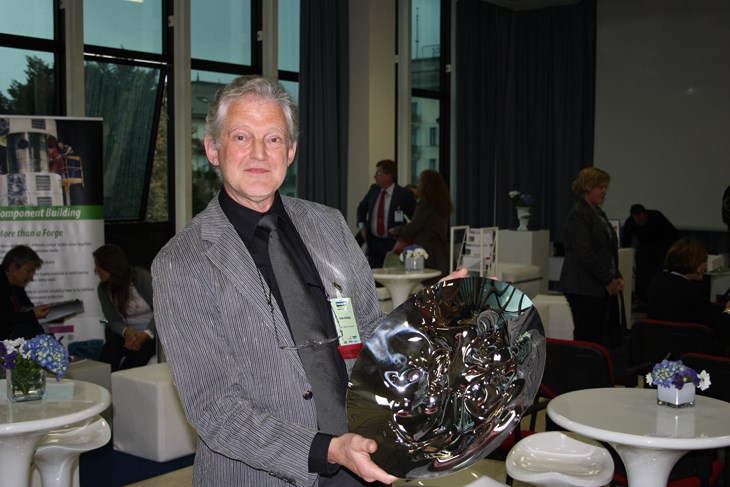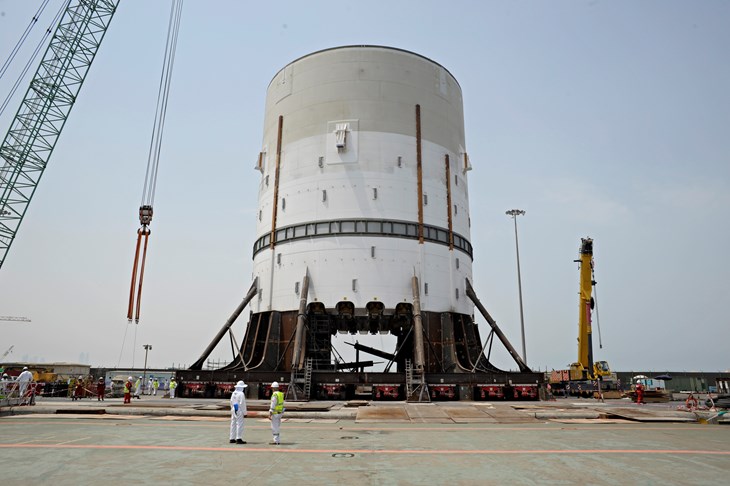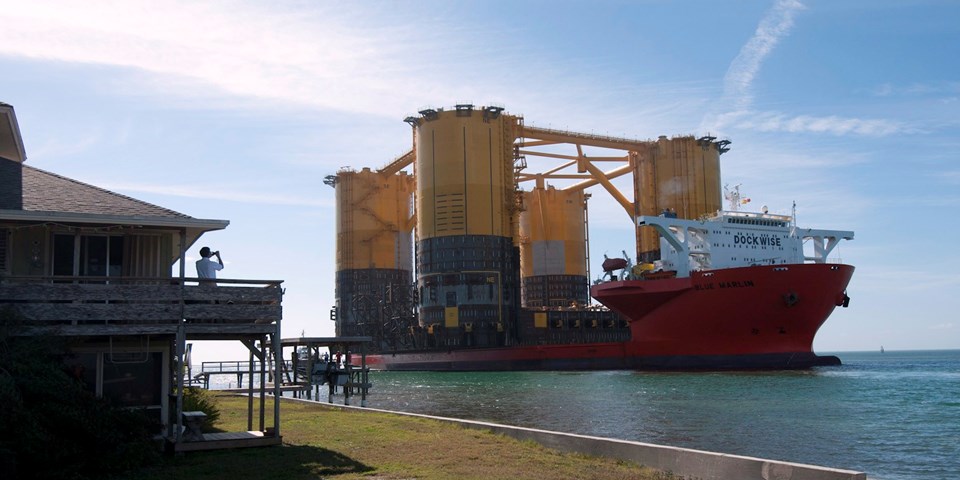As Principal Corrosion Engineer for Shell Projects and Technology, Sytze fulfills a complex role, which is perhaps best described as an internal consultant for the company.
“My job is a combination, ranging from laboratory research to visiting sites out in the field,” begins Sytze. “Corrosion engineers help in many different ways; from supporting new projects, to writing reports, to carrying out research in cooperation with a university or in our own laboratories, to providing focused solutions for problems arising in the field.”
Previously based in his home country of the Netherlands, for the past three years Sytze has been based in Houston, supporting Shell’s oil & gas projects in the Gulf of the Mexico. His role there has been to provide support on corrosion issues for both new projects and existing operations.
Sound decision making
“I‘m not satisfied with doing things superficially,” explains Sytze. “With my scientific technical background my role is to make sure that decisions are based on sound technical principles. There is often no quick yes or no answer with corrosion engineering; it’s important that every factor is carefully thought through.
“That’s why project teams or colleagues in the field come to us with difficult issues. Our department employs highly qualified people using expensive, specialized laboratories. This isn’t used for simple everyday problems! We tackle the tough problems to ensure that decisions are made based on a sound technical perspective.”
While the role of a corrosion engineer may conjure up images of a scientist working in a laboratory, it’s actually a very people-oriented job, which involves interaction with colleagues from multiple disciplines, explains Sytze.
“Over the years much of my work has been a combined effort involving researchers and people in the field. I have a lot of meetings of course, as well as regular contact with our partners in production. Every month I meet with the team at the Shell office in New Orleans which run Shell’s oil and gas production in the Gulf of Mexico. Contact with universities and organizations like NACE (National Association of Corrosion Engineers, Int.) and ISO (International Organization for Standardization) also makes up a significant part of my work. Together we define and regulate new developments which may have an impact beyond the company, for the industry as a whole.”
Upstream focus
Sytze’s work covers the use of metallic materials, in particular corrosion resistant alloys and how they compare with carbon steels when used in corrosive conditions.
“My main area of focus is stainless steels in upstream environments. This means from the drilling, testing and start-up of oil and gas wells through to the oil and gas being extracted, separated and transported ashore. Essentially it covers the whole route that hydrocarbons take from the reservoir to the plants. Sometimes this involves very specialized projects such as the construction of the Olympus platform which was installed last year. It’s the largest floating structure in the Gulf of Mexico and includes a huge variety of materials.
“Without stainless steels these types of platforms simply wouldn’t operate; the process equipment in particular includes a lot of CRAs. Another example which has attracted a lot of attention is the Prelude FLNG project off Northwest Australia. At the other end of the spectrum, in west Texas there are hundreds of small oil wells operating onshore and an increasing number of fracking sites. These all have materials issues, which need to be addressed. It’s a very diverse portfolio.”
A range of corrosion resistant alloys
“Looking at the Shell portfolio from an upstream perspective, there is an extremely wide range of materials in use. The two main material considerations are strength and corrosion and cracking resistance. In the upstream sector we don’t use a great deal of exotic materials but prefer to use the tried and tested grades.
“These start with the simplest stainless steel containing 13 percent chrome (Cr) which is used extensively in the Gulf and is really the workhorse downhole tubing material for the more corrosive conditions. On the platforms a lot of equipment such as the large vessels used to separate liquids from gases are either manufactured from or clad with stainless steels such as duplex or 316. Duplex is also used quite a lot for piping on platforms. More extreme applications, for instance highly sour wells containing hydrogen sulfide (H2S), place special demands on materials and require the use of very expensive nickel alloys. Lower grades of stainless steels are simply not resistant to these environments.”
He continued to explain, “My team spends lot of time optimizing the material specifications: No-one wants to spend more than absolutely needed. It’s one of the main challenges we face. While the cost of CRAs is an important aspect, conditions such as higher temperatures, acidity, CO2 levels etc. require the use of higher grades. More generally, the higher Capex involved with using CRAs needs to be balanced against the increased Opex associated with corrosion management programs necessary for carbon steels. In these evaluations, ensuring safe oil and gas production operations is paramount.”
Correct material selection
“Availability is an important issue with CRAs, and sometimes we question whether a material is really available at all! Delivery times play a big role in oil and gas projects. If you had unlimited time you could select and order your CRAs years in advance, but that’s not how project management works. Everything we do has to lead to a profitable and safe solution. If you tell a project manager he can have an exotic CRA in two years or carbon steel in one year, you know what the answer will be.
“However all our plants must be very reliable and very safe, as outlined in Shell’s ‘Goal Zero’ policy. This encompasses the belief that we can operate without fatalities or significant incidents despite the often difficult conditions in which we operate. In terms of material selection this means that if a project wants to use readily available mate- rials such as carbon steel, we say ‘no’ if steel corrosion cannot realistically be managed to a rate low enough to avoid impact on safety. Decisions have to be technically sound, allowing us to make the case for CRAs and plan for longer delivery times.”
Another factor is sustainability, which has several different aspects, explains Sytze. “Oil and gas production is a long term business: new projects may take anything from two to twenty years to start up. A project in a remote and challenging location such as the Arctic can take 10-20 years from discovery to full production. So we must consider the sustainability of the entire process. In this context it’s very important to consider the environment both now and in the future, because we may still be working at a site 50 years from now. That’s the kind of time scale we think about when producing oil and gas.”
A good example of this is Texas, where oil production began over a century ago, and many on-shore facilities still in use date back to the oil boom of the 1950s.
“The Gulf of Mexico has facilities a few decades old, while in the North Sea the offshore industry also dates back over 35 years. It takes a lot of effort to repair or replace these facilities so you can see that sustainability is an important issue.”
Materials specified for cast and forged components such as pumps or valves, or sub-sea manifolds where various pipelines are gathered together before rising to the platform, produce some unique challenges.
“The producers of stainless steels have a lot of materials knowledge and have many ways to produce high corrosion and cracking resistant material as cost effective as possible. This is achieved by carefully alloying all the proper elements in the right ratios to result in a good stainless steel or CRA. However if you take the bar or plate they have produced and melt, cast or forge it you can alter the mix of those elements. The various elements may combine to form detrimental substances or crystals, which can lead to cracking along those grain boundaries. At Shell we have a lot of quality assurance in place to prevent this.”
“Erosion in pumps is a particular challenge for material specification because, while a pipeline is subjected to a regular flow at a certain velocity, in a pump there are components raising the pressure and pushing your liquids along. This creates a lot of turbulence and possibly even cavitation which can erode the thin passive oxide layer on the stainless steel.”
Constant technological challenges
“Without technological developments and the development of new science, oil and gas production would eventually come to a grinding halt,” continues Sytze.
“If equipment fails it can result in catastrophic consequences, as happened during the Macondo disaster in the Gulf of Mexico. The industry is pushing the boundaries to extract oil and gas from increasingly difficult locations such as extremely deep water in the Gulf of Mexico and offshore Brazil, and very corrosive environments such as the Middle East and Kazakhstan.
“This would not be possible without new technological developments. The challenge is to meet those demands with sound scientific and technological principles. As a corrosion expert this is an exciting part of the job but it also throws up practical challenges. There is a very different mindset between the crews opening and closing wells and running platforms, and people like me who do much of our work in a laboratory, but somehow we have to work together. If we don’t then the whole enterprise will not function.”
“An important trend for the oil majors is that the scale of production is increasing and the locations are becoming more difficult to access. There are sound reasons for taking our time and investing a lot of effort into these challenges because it’s very difficult to work in these tough locations. There is no denying that the trend to extract oil and gas from inaccessible areas is driving advancements in technology.”
“The world is changing…we are moving to more challenging areas for oil and gas exploitation yet at the same time the world will obviously not accept disasters such as that which occurred in the Gulf of Mexico. All factors considered, this is probably the most important factor for materials and corrosion engineering to cope with in the industry today.”



